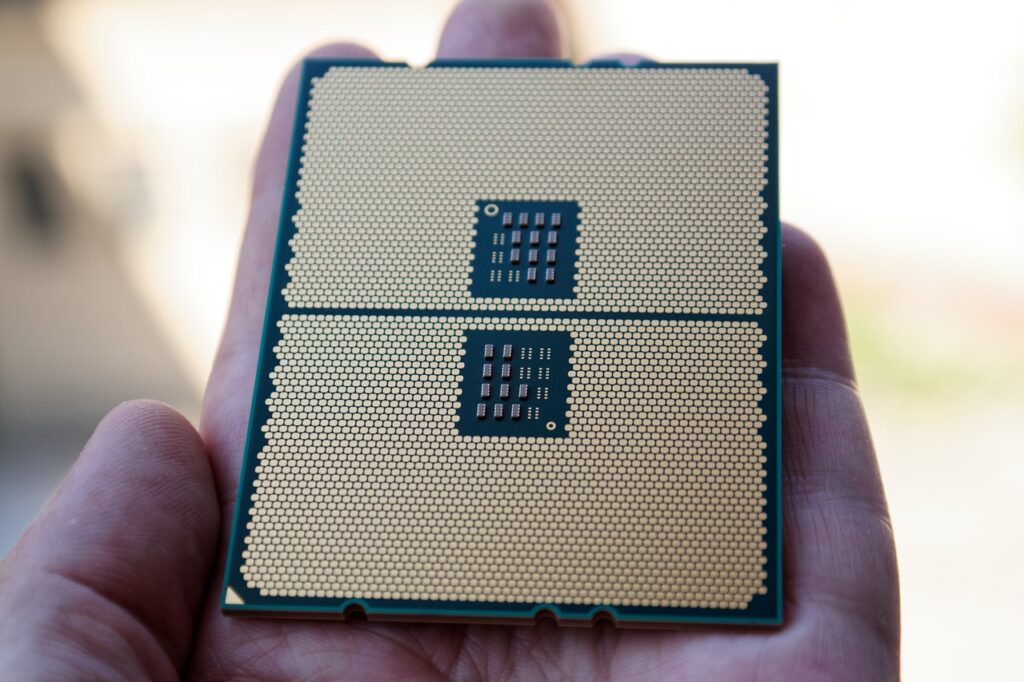The Microchip Revolution: Avionics at the Speed of Light in 2025

Global Avionics Round-Up from Aircraft Value News (AVN)

As 2025 approaches, the aviation industry stands on the cusp of a technological revolution fueled by the introduction of super-fast microchips. These advanced semiconductors are set to redefine avionics, delivering unprecedented processing power, efficiency, and reliability.
Faster, Smarter, Safer Avionics
Super-fast microchips, developed with cutting-edge nanotechnology, are enabling avionics systems to process complex data streams in real time. For pilots, this means quicker access to critical information, such as weather patterns, air traffic data, and engine performance metrics. Enhanced real-time analytics not only improve situational awareness but also facilitate faster decision-making, ensuring safer skies.
Enabling Next-Generation Autonomous Systems
One of the most transformative impacts of these microchips is their role in advancing autonomous flight systems. With superior processing power, aircraft equipped with these chips can execute intricate algorithms for navigation, collision avoidance, and landing with minimal human intervention. Autonomous capabilities are no longer confined to test programs but are becoming a mainstream reality for cargo and passenger flights alike.
Connectivity and the IoT Revolution
The Internet of Things (IoT) is gaining significant traction in aviation, with aircraft becoming highly connected ecosystems. Super-fast microchips underpin the seamless integration of avionics systems with ground control and cloud-based platforms. This
connectivity enhances predictive maintenance by analyzing performance data in real time, reducing downtime, and lowering operational costs.
Implications for Aircraft Values
As avionics systems evolve, the adoption of these microchips is already influencing aircraft valuations. Models equipped with next-gen avionics are seeing higher base values and lease rates, as airlines prioritize aircraft that promise enhanced performance and operational efficiency. Conversely, older aircraft with outdated systems face accelerated depreciation.
The Airbus A350-1000, already a leader in avionics innovation, is positioned to benefit substantially. Its state-of-the-art systems are compatible with next-generation microchip upgrades, enhancing its appeal to operators seeking cutting-edge performance and fuel efficiency.
Similarly, the Boeing 777X family, including the 777-9, stands to gain as its avionics suite incorporates high-speed processing capabilities, supporting its long-haul operations and pilot-assist systems. The 777X is a twin-engine, widebody, long-range jetliner that’s one of the world’s largest and most efficient twin-engine jets.
Narrowbody aircraft such as the Airbus A321XLR (Extra Long Range) may also see increased demand, particularly among carriers requiring enhanced operational efficiency on medium-haul routes. These advancements are expected to attract premium lease rates as operators seek the economic advantages tied to enhanced avionics.
The A321XLR is a groundbreaking aircraft in the narrowbody segment, designed to serve routes traditionally dominated by widebody planes. The A321XLR offers a maximum range of approximately 4,700 nautical miles (8,700 km), significantly farther than its predecessor, the A321LR (Long Range), which has a range of about 4,000 nautical miles.
The extended range of the A321XLR enables airlines to operate long-haul routes previously inaccessible to narrowbody aircraft, such as transatlantic flights and routes connecting secondary cities. Accordingly, the technology in the cockpit of the A321XLR disproportionately benefits from ultra-sophisticated tech.
Older aircraft models with limited upgrade potential could face declining demand, exacerbating disparities in market valuations and highlighting the growing importance of technology in determining aircraft competitiveness.
With super-fast microchips redefining the capabilities of avionics, 2025 promises to be a transformative year for aviation, setting the stage for faster, smarter, and safer skies.
This article also appears in our partner publication Aircraft Value News.
John Persinos is the editor-in-chief of Aircraft Value News. You can reach John at: jpersinos@accessintel.com
The post The Microchip Revolution: Avionics at the Speed of Light in 2025 appeared first on Avionics International.
—————
Boost Internet Speed–
Free Business Hosting–
Free Email Account–
Dropcatch–
Free Secure Email–
Secure Email–
Cheap VOIP Calls–
Free Hosting–
Boost Inflight Wifi–
Premium Domains–
Free Domains





